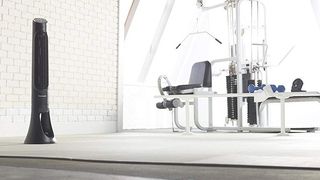Fewer things are more uncomfortable than having to sit in a hot room, office or bedroom day after day, wishing you could just be cooler. Not everyone has access to the best air conditioning units or best window air conditioners, tower fans are a great solution to improve the airflow around you and make life bearable again on those hot summer days and nights. But just having a fan blowing doesn't necessarily mean that you are getting the best airflow and circulation in a room. First things first, you'll need to check out our guide to the best tower fans - there's no use having a strategically placed fan if it's not powerful enough to cool the room. Here are a few tips to help you keep your cool this summer and improve your airflow situation.
Think strategically
Look around and think about the structure of your room or office. Where do you need the cool air the most? Is there more than one door or are there windows you could open? Make a plan of where a tower fan would fit best and still be out of the way and how the airflow, if any, currently moves. It wouldn't be a wise choice to place a fan in the middle of a heavy traffic walkway and a single door office or bedroom will have a completely different airflow compared to a lobby or open-air break room.
Find the right angles
Once you have a plan, set up your tower fan in the position you think will be best and begin the process of adjusting. Most, if not all, tower fans oscillate at least 90 degrees and some even rotate up to a full 180 degrees. This rotation is the basis of your air flow, so be sure to get it pointed in the right direction.

Depending on your room size, setting a fan in a corner may be a good option as more of the room can be covered evenly. But if you have certain areas that you want to be sure to cool, such as a desk area or bed, you will need to position the angle of the fan coverage to that certain location. Tower fans are a great way to cover a large area with a gentle or strong breeze, as they can produce a sheet of air rather than the small wind tube regular rotary fans create.
Remove obstacles
Even though tower fans stand above the normal height of traditional oscillating fans, the breezes they create can still be blocked by tall furniture such as bookshelves, couches and beds. If possible, move your fan so that it can blow around or over these obstacles. If you can do so safely, you may want to consider placing your tower fan on a sturdy base to give it even more height.
Unobstructed airflow is your friend during a heat wave so be sure to move piles of clothes, stacks of books, houseplants or whatever might be in the way of the perfect airflow.
Get more than one fan
Getting the air circulating in large rooms or houses can be a chore too great for one fan, but if you have two fans working together in a room, you'll be surprised at how quickly the temperature drops. Don't be afraid to get more than one fan. Take into consideration what you want your fans to cool, as you don't want to overpower your room and turn it into a tornado zone.

A great two-fan method is to place one near a window facing out with another in a doorway, effectively creating a wind tunnel. You can also set a tower fan in a diagonal corner from another, facing the center of the room, and get them to oscillate in rotation. This has an effect much like stirring an icy pitcher of lemonade and can get a circular airflow going.
Keeping cool can be a fine art, but once you find the optimal way to cool your living space, life will be much better and less frustrating. Using tower fans to improve the circulation in your office or home can reduce air conditioning costs, help you be less grumpy and just be more comfortable all around.


